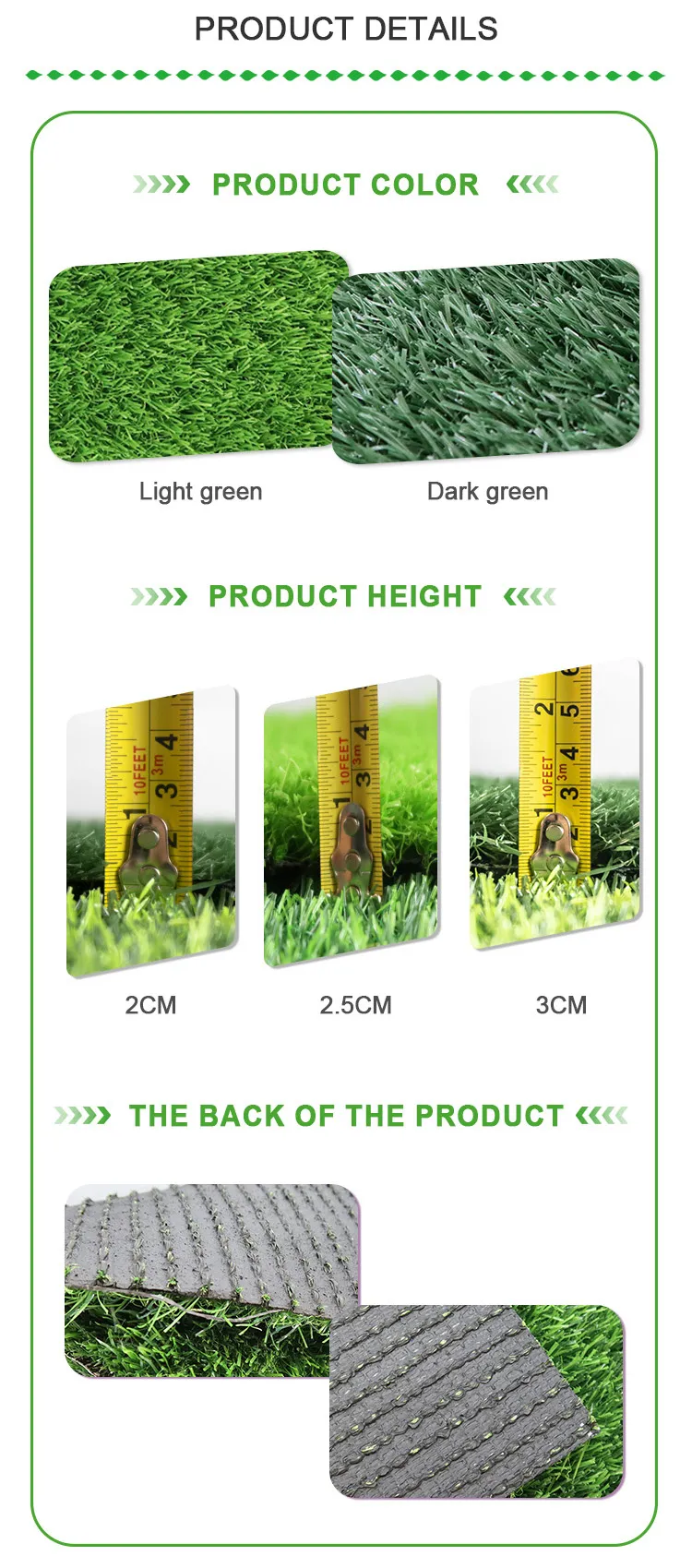
- Afrikaans
- Arabic
- Belarusian
- Bengali
- Czech
- Danish
- Dutch
- English
- Esperanto
- Estonian
- Finnish
- French
- German
- Greek
- Hindi
- Hungarian
- Icelandic
- Indonesian
- irish
- Italian
- Japanese
- kazakh
- Rwandese
- Korean
- Kyrgyz
- Lao
- Latin
- Latvian
- Malay
- Mongolian
- Myanmar
- Norwegian
- Persian
- Polish
- Portuguese
- Romanian
- Russian
- Serbian
- Spanish
- Swedish
- Tagalog
- Tajik
- Thai
- Turkish
- Turkmen
- Ukrainian
- Urdu
- Uighur
- Uzbek
- Vietnamese
Cost Analysis of Installing Artificial Grass in Playground Environments
Nov . 07, 2024 14:49 Back to list
The Cost of Artificial Grass Playgrounds An In-Depth Analysis
In recent years, artificial grass has emerged as a popular choice for playgrounds, providing a durable, low-maintenance alternative to traditional grass. As communities prioritize safe and enjoyable play environments for children, understanding the costs associated with installing and maintaining artificial grass playgrounds becomes crucial. This article delves into the various factors that influence the overall expense of artificial grass, exploring installation costs, maintenance, and long-term benefits.
Initial Installation Costs
One of the most significant factors in the total cost of an artificial grass playground is the initial installation. On average, the cost of artificial turf can range from $5 to $20 per square foot, depending on the type of grass and the complexity of the installation. For a standard playground area of around 1,000 square feet, this translates to a potential investment of $5,000 to $20,000.
Several elements affect this price range
1. Quality of Turf The quality of artificial grass can greatly influence the overall cost. Higher-quality options often feature improved durability, UV resistance, and realistic aesthetics. While they may come with a higher upfront cost, investing in high-quality materials can lead to lower replacement and maintenance costs over time.
2. Site Preparation Proper preparation of the playground site is essential for the longevity and proper drainage of artificial grass. This may involve removing existing sod, leveling the ground, and installing a base layer of materials such as gravel. This site preparation can add an additional $1 to $5 per square foot, depending on the complexities involved.
3. Labor Costs Labor costs can vary significantly based on geographic location and the availability of skilled workers. In urban areas where demand for landscaping services is high, labor costs may be steep. Homeowners and community planners should factor in these variations when budgeting for installation.
Maintenance Expenses
One of the key advantages of artificial grass is its low maintenance requirements compared to natural grass. However, some ongoing costs must still be considered. Unlike natural grass, which requires regular mowing, watering, and fertilization, artificial turf only needs occasional brushing and rinsing.
artificial grass playground cost

Maintenance costs typically include
1. Cleaning Regular cleaning ensures that the turf remains hygienic and free of debris. Depending on local weather conditions and usage, this may involve infrequent water rinsing and the occasional deep cleaning with specialized equipment.
2. Repairs While artificial grass is designed to withstand significant wear and tear, damages may occur, particularly in high-traffic areas. Repair costs can vary, but setting aside a maintenance budget of $200 to $500 annually is a practical approach for minor repairs.
3. Infill Replacement Some types of artificial grass require infill materials (like rubber or sand) that settle over time. Replenishing this infill periodically can incur costs of approximately $1 to $3 per square foot.
Long-Term Benefits
Despite the upfront and ongoing costs associated with artificial grass, many schools and communities find that the long-term benefits outweigh the initial investment. Artificial turf can provide a safe, all-weather play surface that reduces injury risk and increases overall playtime availability. Additionally, the water conservation achieved by eliminating the need for irrigation can yield significant savings for municipalities combating drought conditions.
Moreover, the environmental benefits—such as reduced pesticide and fertilizer use—make artificial grass an appealing option for ecologically conscious communities. Enhanced durability means that playgrounds can remain safe and appealing for years without the need for constant upkeep.
Conclusion
When considering the cost of artificial grass playgrounds, it's essential to compare both the immediate expenses and the long-term benefits. The initial installation costs may be higher than traditional grass, but the reduced maintenance and enhanced safety can lead to better outcomes for children's play experiences. By carefully evaluating options and engaging knowledgeable contractors, communities can make informed decisions that prioritize safety, sustainability, and enjoyment on their playgrounds.
-
The Benefits of Artificial Turf for Indoors
NewsJul.15,2025
-
How Artificial Grass Suppliers Ensure Quality Products
NewsJul.15,2025
-
Artificial Grass and Pets: A Space for Relaxation
NewsJul.08,2025
-
Balcony & Outdoor Decoration with Artificial Grass
NewsJul.08,2025
-
Best Indoor Artificial Grass for Home
NewsJul.07,2025
-
Best Pet Turf for Dogs: Safe & Durable Artificial Grass Options
NewsJul.07,2025
Products categories









